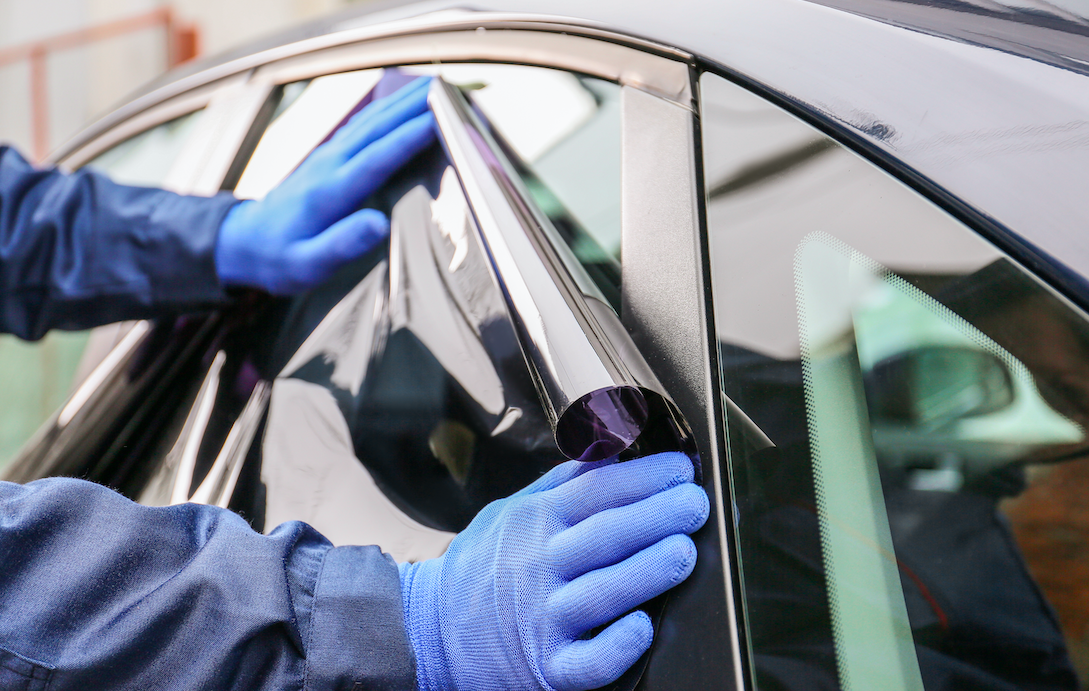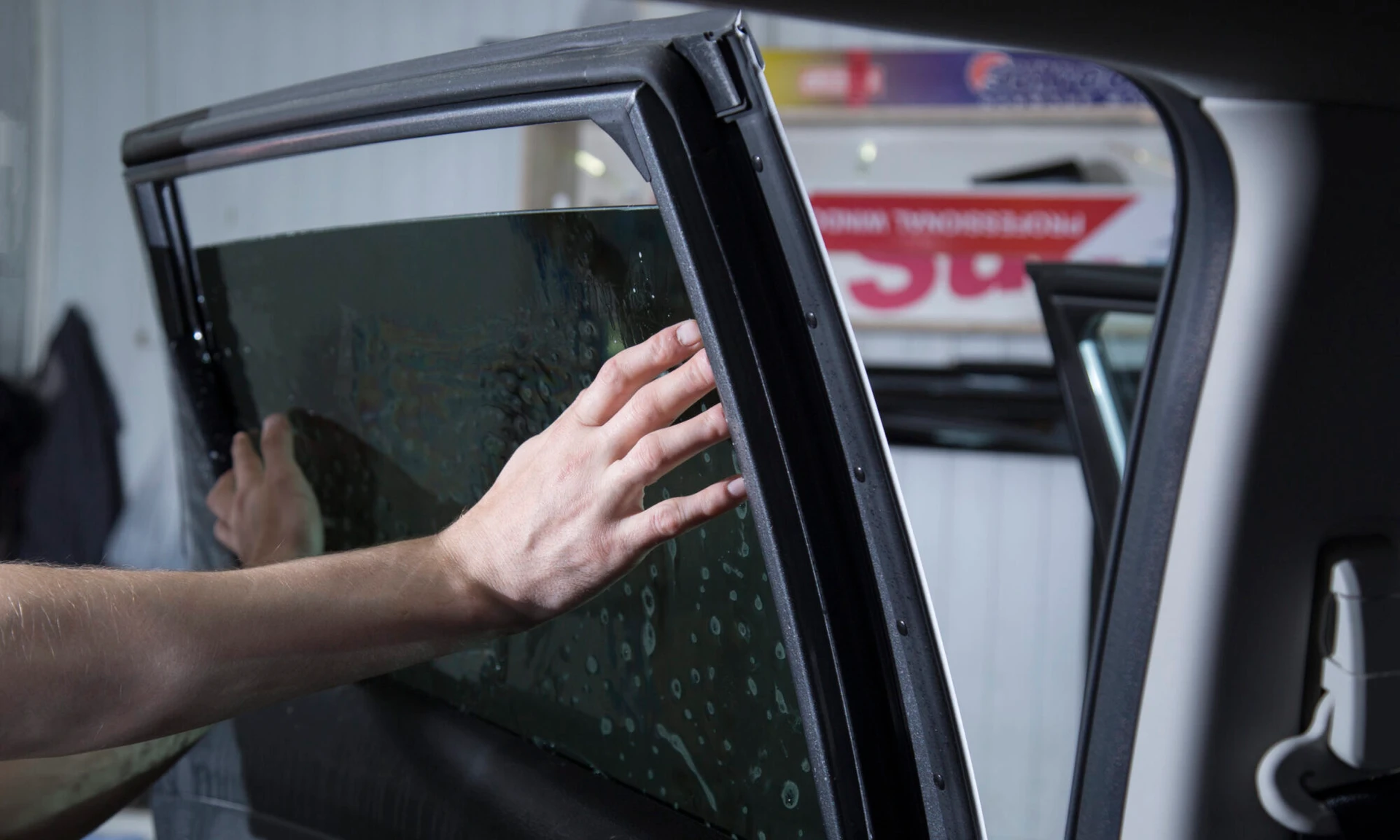A Comprehensive Overview to Comprehending Automobile Window Color and Its Benefits
Auto window tinting offers greater than simply a visual function for lorries. It provides various types, each with unique features and benefits. Recognizing these choices, in addition to legal regulations and maintenance suggestions, is essential for any vehicle owner. The benefits may significantly boost driving convenience and vehicle longevity. As one discovers the subtleties of home window tinting, the question occurs: what kind of color is ideal matched for private requirements?
Comprehending Vehicle Window Tint: What It Is and Just how It Works
Automobile window tint acts as a safety obstacle that improves vehicle visual appeals while giving functional advantages. This slim film is related to the interior surface of automobile home windows, minimizing glare and blocking damaging ultraviolet (UV) rays from the sunlight. By filtering system sunlight, car home window color aids to control the interior temperature level of the car, bring about enhanced comfort for passengers and decreased dependence on air conditioning.Additionally, it protects the lorry's interior from fading, protecting both upholstery and control panel materials. The color can also boost personal privacy, making it harder for outsiders to see inside the lorry. Specific kinds of window tint can enhance security; in the occasion of an accident, the movie aids hold destroyed glass together, reducing the threat of injury from flying shards. On the whole, auto home window color offers both functional and aesthetic objectives, making it a preferred option among car proprietors.
Kinds of Home Window Tint: A Summary of Options
When thinking about home window color choices, several types are available, each with distinctive features. Colored, metalized, and ceramic home window colors offer differing degrees of warmth rejection, UV protection, and aesthetic allure. Recognizing these distinctions can help vehicle owners make informed choices based on their preferences and demands.
Dyed Home Window Tint
Dyed window tint represents a prominent option among car proprietors seeking a affordable and effective method to improve their automobile's looks and privacy. This sort of color is created by placing a layer of dye between an adhesive layer and a safety coating, leading to a dark appearance that minimizes glare and enhances aesthetic convenience. While dyed home window color efficiently blocks dangerous UV rays, it might not supply the very same level of warmth being rejected as other tint kinds. Additionally, its shade can discolor with time, possibly reducing its performance. Regardless of these drawbacks, colored window tint continues to be popular for its cost-effectiveness and capability to offer a smooth, stylish look to different vehicle models.
Metalized Window Color
Metalized home window color uses a balance of design and performance, making it a prominent selection among automobile proprietors. This sort of color integrates metallic particles within the film, enhancing both visual charm and heat rejection. The reflective top quality of metalized color aids to minimize glow and enhance privacy, while likewise offering UV security, which safeguards the car's inside. In addition, metalized window color can enhance home window toughness, potentially protecting against smashing during mishaps. Nonetheless, it is important to note that the metallic components can hinder digital signals, such as GPS and cellular phone function. Generally, metalized window tint provides an effective solution for those looking for a combination of sunlight, appearance, and durability defense for their cars.
Ceramic Home Window Color
Ceramic window color stands for a sophisticated alternative in the range of auto home window movies, offering distinct benefits over traditional tints. Unlike dyed or metalized movies, ceramic tints use advanced ceramic fragments, which efficiently turn down heat and UV rays without jeopardizing exposure. This innovation guarantees that vehicles stay cooler, minimizing reliance on cooling and enhancing gas effectiveness. In addition, ceramic home window tints are much less likely to hinder electronic devices, such as GPS or mobile signals, making them a functional selection for modern-day cars. Furthermore, their durability and scrape resistance add to a longer lifespan compared to various other types of tints. Generally, ceramic window tint offers remarkable performance, convenience, and defense, making it a preferred alternative for critical car proprietors.
Benefits of Automobile Home Window Color: Beyond Appearances
While lots of people associate automobile window tint with improved design, its advantages prolong much past plain looks. One substantial advantage is warmth decrease; window color can obstruct approximately 99% of damaging UV rays, maintaining the indoor cooler and safeguarding furniture from fading. This not only improves convenience throughout heat yet additionally lowers reliance on cooling, resulting in improved gas efficiency.In enhancement, automobile window color offers an added layer of privacy and security. Colored home windows make it tough for outsiders to see inside the vehicle, which can prevent burglary and safeguard prized possessions. Additionally, several colors reinforce the glass, minimizing the probability of ruining in the occasion of a crash, consequently improving safety.In enhancement to these functional advantages, car home window color can also add to glare reduction, enhancing visibility for guests and chauffeurs alike. This diverse strategy to convenience and security makes home window color a useful financial investment for automobile owners.
Legal Factors To Consider: Tinting Laws by State
Before devoting to auto window tint, vehicle owners must browse an intricate landscape of tinting laws that vary by state. Each state has details regulations governing the permitted levels of tint darkness and reflectivity for different home windows, consisting of windscreens, front side home windows, and back windows. These regulations frequently include visible light transmission (VLT) portions, which dictate just how much light can go through the colored glass.Some states permit darker colors on rear windows while limiting front side and windshield colors for security reasons. Additionally, certain states may need a certification from the maker to confirm conformity with tinting legislations. Violating these guidelines can result in penalties, mandatory removal of the color, or both. It is necessary for automobile proprietors to research their state's legislations thoroughly to guarantee lawful conformity prior to mounting window color. see this This diligence can conserve money and time in the helpful resources lengthy run.
Selecting the Right Tint: Aspects to Think about
When selecting the ideal home window tint for a vehicle, numerous essential aspects enter play. Tint darkness levels, UV protection rankings, and conformity with legal policies are essential considerations to guarantee both appearances and performance. Reviewing these facets will aid people make an informed decision that fulfills their requirements and complies with local laws.
Tint Darkness Degrees
Selecting the suitable color darkness degree is vital for achieving the desired balance in between looks and performance in car home window tinting. Different states have varying legal laws pertaining to tint darkness, which can impact the option. Usually, colors are gauged in percentages, with lower portions suggesting darker tones. Darker colors offer raised privacy and a sleek look yet can decrease visibility, especially in the evening. On the other hand, lighter tints keep an even more open feel, making sure appropriate presence while still supplying some warmth and glow reduction. Individuals ought to consider their driving practices, regional laws, and personal preferences when making a choice. Eventually, the best color darkness degree enhances the vehicle's appearance while ensuring safety and security and conformity with legal requirements.
UV Security Rating
Color darkness levels play a substantial role in the general efficiency of car home window tinting, yet one more important element to evaluate is the UV defense score of the chosen tint. This score shows the percentage of harmful ultraviolet rays that the color can block. Top quality tints usually supply 99% or even more UV defense, safeguarding guests and the lorry's inside from sunlight damages. Davinci of Michigan. Prolonged direct exposure to UV rays can bring about skin troubles and fading of furniture, making a high UV security rating crucial for health and long life. When picking home window color, consumers should prioritize this ranking alongside darkness degrees to ensure optimum convenience and safety and security while driving. Recognizing these factors help in making an educated decision when spending in automobile window tinting
Legal Rules Compliance
Comprehending local lawful laws is important for anybody considering vehicle window tinting. Each state or area has specific laws controling the allowed degrees of color darkness and reflectivity for different home windows. These guidelines typically define the noticeable light transmission percent, figuring out exactly how much light can pass with the colored glass. Non-compliance can lead to penalties, mandatory removal of the color, or concerns during automobile inspections. Furthermore, some locations may have constraints on the use of specific tinting materials, calling for customers to choose products that meet safety and security standards. It is vital for automobile owners to investigate their regional regulations thoroughly before picking window tint to ensure compliance and avoid prospective lawful issues.

Installation Refine: do it yourself vs. Professional Services
Exactly how does one make a decision between a DIY installment and hiring professional services for auto window tinting? The selection commonly hinges on budget, experience, and preferred outcomes. A DIY technique can be cost-efficient, permitting individuals to save money on labor costs. Nevertheless, it needs other a certain level of ability and expertise regarding the tinting process. Those who are thorough and patient may find success with do it yourself packages available in the market.Conversely, expert services use know-how and top notch materials, ensuring a flawless coating. Experts often guarantee their work, offering peace of mind versus potential problems such as peeling off or bubbling. Furthermore, they know with regional regulations pertaining to tinting, which can be complex for the ordinary vehicle owner.Ultimately, the decision reflects an equilibrium between expense, individual capacity, and the expected top quality of the tinting task. Each option has its advantages, and the finest selection depends on specific scenarios and choices.
Maintenance Tips: Keeping Your Tint in Leading Condition

Regularly Asked Questions
How Much Time Does Window Color Commonly Last on an Automobile?
Home window color commonly lasts in between 5 to 10 years, depending upon aspects such as quality, application, and ecological problems. Regular upkeep and proper care can prolong its life expectancy, guaranteeing optimal efficiency and appearance gradually.
Can Home Window Tinting Damage My Car's Original Glass?
Home window tinting, when used properly, does not harm a cars and truck's original glass. Incorrect setup or low-quality materials may lead to issues like peeling off or bubbling, potentially impacting the glass's honesty over time.
Is Window Tinting Safe for All Kinds Of Vehicles?
Home window tinting is normally secure for a lot of vehicles, gave the film follows local guidelines and is correctly applied. Some specialized vehicles may require details factors to consider, making it essential to seek advice from experts before installment.
Will Home Window Tinting Void My Vehicle Warranty?
The inquiry of whether home window tinting spaces an auto service warranty often depends on the manufacturer's plans. Usually, if the tint does not harm the automobile, guarantees normally remain intact. Speaking with the supplier is suggested.
Can I Get Rid Of Home Window Color Myself if Needed?
Removing home window color oneself is possible, but it requires careful focus to avoid damaging the glass. People ought to use suitable tools and methods to guarantee an effective removal without leaving sticky residue or scrapes behind. While colored window color successfully obstructs dangerous UV rays, it might not use the same level of heat denial as various other color types. Ceramic window color stands for a sophisticated choice in the range of vehicle home window movies, offering distinct benefits over conventional colors. Prior to committing to auto home window color, automobile proprietors should navigate an intricate landscape of tinting laws that differ by state. These regulations frequently consist of visible light transmission (VLT) percents, which determine exactly how much light can pass with the colored glass.Some states allow darker tints on rear home windows while limiting front side and windshield tints for security reasons. Tint darkness levels play a significant role in the overall performance of vehicle home window tinting, however an additional vital element to review is the UV security score of the selected tint.